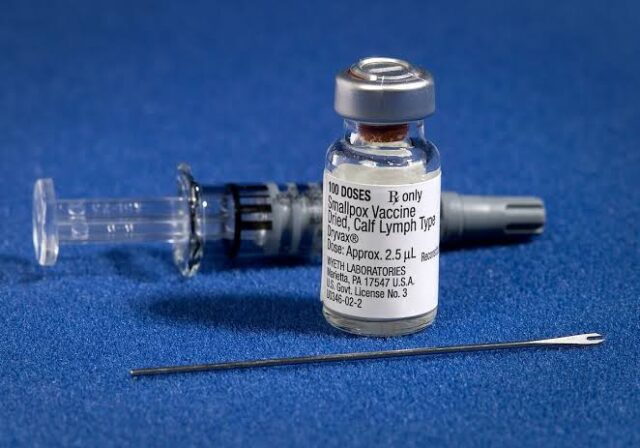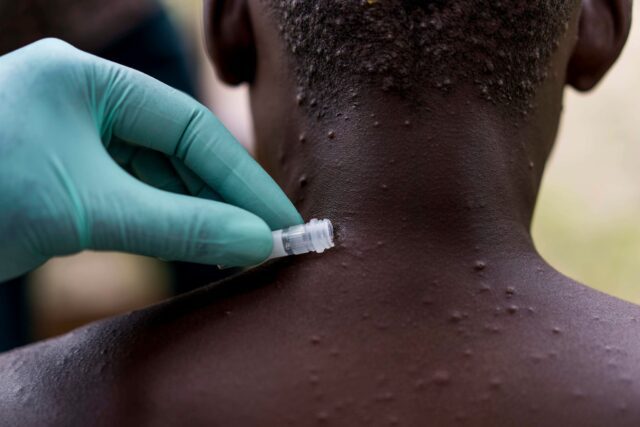Monkeypox is a rare disease caused by infection with the Monkeypox virus. The virus is part of the same family of viruses as the variola virus – the virus that causes Smallpox. However, Monkeypox isn’t related to Chickenpox as its causal virus is known as the varicella-zoster virus. The first human case of Monkeypox was recorded in 1970 at the Democratic Republic of the Congo (DRC).
Monkeypox was recorded in Nigeria in 2017 by Dr. Dimie Ogoina, a disease specialist at the Niger Delta University, Nigeria. On September 22, 2017, an 11-year-old boy with strange rashes and lesions went to his clinic for consultation, the doctor was sure it wasn’t Chickenpox because the boy has had the virus before. Thereafter, the suspicion of Monkeypox came up. However, at that time, Nigeria didn’t have the resources to test for the disease, so the samples were sent to Senegal and the US for diagnosis, it was later confirmed that the 11-year-old patient was suffering from Monkeypox. That marked the first case of Monkeypox in Nigeria. This same year, NCDC recorded 88 other cases of this disease.
In May of 2022, a few cases of Monkeypox were recorded in the United Kingdom. Subsequently, the WHO declared the disease as a public health emergency of international concern due to its widespread. The cases of Monkeypox in Nigeria have taken a huge rise since May of 2022 with 220 cases confirmed between January and August of 2022. However, states like Jigawa, Kaduna, Kebbi, Osun, Sokoto, Yobe, and Zamfara have been exempted.
On May 27,2022, the director-general, NCDC, Dr. Ifedayo Adetifa, disclosed that the Nigeria Centre for Disease Control (NCDC) activated a national multisectoral Emergency Operations Centre for Monkeypox (MPX-EOC) at level 2 to strengthen and coordinate ongoing response activities in the country while contributing to the global in curtailing the disease. The world health organization, WHO stated that vaccines used during the Smallpox eradication program also provided protection against Monkeypox.

How Monkeypox Is Being Contacted
People become infected with the Monkeypox virus through contact with the bodily fluids of infected animals (rodents, squirrels, and different species of monkeys) or humans (alive or dead), including respiratory droplets which are transferred either by coughing or sneezing or through contact with materials contaminated with the virus.
Symptoms of the disease
This includes fever, headache, muscle aches, swollen lymph nodes, exhaustion, respiratory symptoms, and chills followed by a rash. The rash will go through several stages including scabs before healing. This rash can look like blisters or pimples and may be painful and itchy. Patients might have the rash before other symptoms, while in some, the rash comes after other symptoms. Monkeypox is deadly, in as many as 1 to 10% of people who become infected die.

Ways To Prevent Contacting Monkeypox
• Avoid close contact with people who have a rash or bump that look like monkeypox.
• Avoid contact with the utensils, objects, or materials used by people who have monkeypox.
• Wash your hands often with soap and water or alcohol-based sanitizers before eating, before touching your face, and after using the toilet.
• Avoid contact with dead animals, and animals that can spread the monkeypox virus, especially rodents and primates: monkeys, gorillas, chimpanzees, and other related animals.
• Make sure you thoroughly wash all food items before consumption.
If there’s any suspicion of the Monkeypox virus, it’s better to contact The Nigeria Centre for Disease Control (NCDC).
Also read: Meditation Eases Anxiety – Here Are Few Things You Should Know














